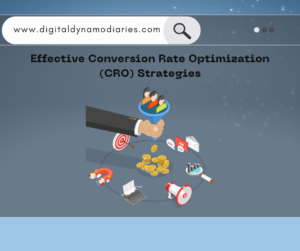Building a Secure and Engaging Members-Only Website
Creating a members-only website allows you to deliver exclusive content, build a dedicated community, and monetize your offerings through subscriptions. This model works well for businesses, influencers, content creators, or anyone looking to offer specialized services. In this guide, we’ll take an in-depth look at how to implement a members-only website, focusing on every aspect from platform selection to security and monetization.
Why Build a Members-Only Website?
Before jumping into the technical steps, it’s crucial to understand why a members-only website could be the best move for your business or brand. Some compelling reasons include:
1. Monetization Opportunities: Offering exclusive content or premium services can provide a steady income stream. You can charge users for access to high-quality materials such as tutorials, webinars, downloadable resources, or even professional consulting services.
2. Building a Loyal Community: A private, members-only platform creates a space for like-minded individuals to connect and engage with your content or services. This not only enhances user loyalty but also promotes deeper interactions and collaboration within the community.
3. Content Protection: A members-only site allows you to protect your valuable content from the general public, ensuring that only those who pay or subscribe can access it.
4. Personalization and Exclusivity: By offering members unique content, events, or perks, you make them feel valued, encouraging higher engagement and retention.
Key Features of a Successful Members-Only Website
To ensure that your members-only website functions effectively and meets user expectations, there are several features you should consider including:
1. Secure User Authentication: Every member should have unique login credentials and secure access to your website. This prevents unauthorized individuals from accessing your exclusive content.
2. Tiered Membership Levels: Offering various levels of membership (e.g., free, basic, premium) allows users to choose the best plan for their needs. Higher-paying members should receive access to more valuable or exclusive content.
3. Community Interaction: Whether through forums, chat rooms, or members-only events, facilitating interaction among members can enhance the sense of community and keep users engaged.
4. Content Dripping: Instead of overwhelming new members with all your content at once, you can release it over time to maintain engagement and encourage long-term subscriptions.
5. Secure Payment Integration: If you’re charging for memberships, make sure your payment methods are secure and user-friendly. Common gateways include PayPal, Stripe, and Authorize.Net.
Step-by-Step Guide to Implementing a Members-Only Website
Now, let’s dive into the step-by-step process of building a successful and secure members-only website.
Step 1: Choose the Right Platform for Your Needs
The first decision you’ll need to make is selecting the platform for your members-only website. The platform will serve as the foundation for everything, so it’s important to pick one that offers flexibility, ease of use, and scalability. Here are some of the top platforms to consider:
– WordPress: This is one of the most popular choices due to its versatility and the availability of numerous membership plugins. It offers extensive customization and can handle everything from small blogs to large, complex membership sites. Key plugins for WordPress include:
– MemberPress: This plugin makes it easy to create, manage, and sell memberships.
– Restrict Content Pro: Perfect for managing content access and offering multiple membership levels.
– WooCommerce Memberships: Ideal for combining e-commerce with membership subscriptions.
– Wix: Wix is a beginner-friendly platform that comes with built-in membership functionality. It’s a great option if you’re looking for a simple, drag-and-drop interface without needing advanced technical knowledge.
– Squarespace: Known for its beautiful design templates, Squarespace also offers a members-only feature called “Member Areas.” This is suitable for those looking to create visually appealing websites without needing too much technical expertise.
Once you’ve selected your platform, you can move on to configuring it for membership functionality.
Step 2: Install Membership Plugins or Enable Built-In Features
Now that you’ve chosen your platform, it’s time to add the membership capabilities. If you’re using WordPress, this involves installing a membership plugin. Let’s explore some of the popular options:
– MemberPress: This is a premium plugin that simplifies the process of managing memberships, protecting content, and accepting payments. It supports content dripping, automated billing, and tiered memberships.
– Restrict Content Pro: This plugin allows you to create private content sections based on membership levels. It integrates with popular payment gateways and offers customizable member registration forms.
– WooCommerce Memberships: If you’re running an online store, WooCommerce Memberships seamlessly integrates membership features into your e-commerce setup. You can sell memberships as products and grant access to exclusive content, products, or discounts.
For non-WordPress platforms like Wix and Squarespace, you can simply enable the built-in membership features available within their interfaces. These platforms provide user-friendly tools to manage members, restrict content, and process payments.
Step 3: Create Custom Registration Forms and User Profiles
User registration is an essential part of a members-only website. You need to design custom registration forms to collect necessary information from users while keeping the process simple. Here are key steps to consider:
– Customize Your Registration Form: Limit the number of fields to ensure a quick and user-friendly registration experience. Only ask for essential information such as name, email, and payment details (if applicable).
– User Profiles: Allow users to create personalized profiles where they can manage their details, upgrade their membership plans, or access exclusive content.
– Email Verification: Ensure email verification is part of the sign-up process to enhance security and avoid spam accounts.
Step 4: Restrict Content to Members
Content restriction is the heart of any members-only website. This is where you decide which content is available to which membership tier. You can restrict content in various ways:
– Page/Post-Level Restrictions: Use your membership plugin to restrict specific pages, posts, or categories to logged-in members only.
– Content Dripping: To keep members engaged, consider dripping content over time. For example, instead of giving full access upfront, you can release a new video or article every week. This encourages users to maintain their subscription and check back frequently.
– Multiple Membership Levels: Offering different membership tiers allows you to cater to a wide range of users. For example, a free member might get access to basic content, while premium members gain access to advanced materials, downloadable resources, or one-on-one consultations.
Step 5: Implement a Secure Payment System
If your members-only website includes a paid subscription model, you’ll need a secure and reliable payment system. Here are some things to consider:
– Choose a Payment Gateway: Payment gateways like PayPal, Stripe, and Authorize.Net are widely used and trusted. Ensure the one you choose supports recurring payments, as most membership models involve ongoing subscription fees.
– Automate Billing: Automating the billing process ensures that members are charged at regular intervals (monthly, yearly) without manual intervention. This also helps you manage renewals and cancellations.
– Secure Transactions: To protect both your business and your customers, ensure that all transactions are encrypted with SSL certificates. This not only secures data but also boosts user trust in your website.
Step 6: Create Valuable, Engaging Content for Members
The content or services you provide will determine whether users stay subscribed to your website. You must consistently offer value to your members. Some ideas include:
– Exclusive Articles and Tutorials: Create high-quality, exclusive content that can’t be found elsewhere. This could include how-to guides, expert interviews, or case studies.
– Webinars or Live Streams: Host live events or webinars for members to attend, offering Q&A sessions or expert insights.
– Forums and Community Groups: Encourage members to interact with each other through forums, discussion boards, or private social media groups. This enhances community engagement and keeps users coming back.
– Early Access or Discounts: Provide early access to new content, courses, or products. Offering exclusive discounts or deals can also be a great way to add value to higher-tier memberships.
Step 7: Secure Your Members-Only Website
Security is paramount for a members-only site, especially if you handle sensitive data such as payment information or personal member details. Take these steps to ensure your website is secure:
– Install an SSL Certificate: SSL encrypts data between the server and the user’s browser, ensuring that sensitive information like login credentials and payment details are protected. All modern membership websites should have SSL in place.
– Two-Factor Authentication (2FA): Enhance login security by implementing 2FA, requiring users to verify their identity through an additional step, such as entering a code sent to their mobile device.
– Regular Software Updates: Keep your platform, plugins, and tools up to date. Outdated software can have vulnerabilities that hackers can exploit.
– Backups: Set up regular automated backups for your website. In the event of a crash, server failure, or security breach, you can quickly restore your site.
– Limit Login Attempts: To prevent brute-force attacks, limit the number of login attempts from an IP address. If a user fails to enter the correct credentials after a certain number of attempts, their IP can be temporarily blocked.
Monetizing Your Members-Only Website
Once your members-only website is set up and running, it’s time to explore different monetization strategies. Here are some popular ways to earn money from your membership site:
1. Subscription Fees: Charge members a recurring monthly or yearly fee for access to your exclusive content, resources, or community.
2. One-Time Fees: Offer lifetime memberships for a one-time fee, giving users access to premium content without recurring payments.
3. Sell Courses: If you’re an expert in a specific field, create and sell premium courses to your members. You can bundle these into higher-tier memberships or sell them as standalone products.
4. Affiliate Marketing: You can recommend products or services to your members and earn a commission on each sale through affiliate marketing.
5. Sponsored Content: Partner with brands to create exclusive, sponsored content for your members. This works particularly well if your members belong to a specific niche market.
Promoting Your Members-Only Website
Finally, the success of your members-only website depends on your ability to attract users. Here are some marketing strategies to grow your membership base:
1. Email Marketing: Build an email list and send out newsletters or promotional offers to attract new members. Offer free trials or discounts to encourage sign-ups.
2. Social Media: Use your social media platforms to promote your website and share testimonials from current members. Offering a “behind the scenes” look at what exclusive content they’ll get can entice new users to join.
3. Influencer Partnerships: Collaborate with influencers in your niche to spread the word about your website. Influencers can drive traffic and credibility, helping to grow your community.
4. Referral Programs: Set up a referral program that rewards current members for bringing in new subscribers. Word of mouth can be a powerful marketing tool, especially in tight-knit communities.
Conclusion
Building a successful members-only website requires careful planning, the right tools, and consistent effort. From selecting the right platform and securing your site to creating valuable content and monetizing your offerings, every step is critical to delivering a seamless experience to your members. By following this guide and tailoring your approach to meet your audience’s needs, you can create a thriving, profitable members-only website that fosters community engagement and loyalty.



